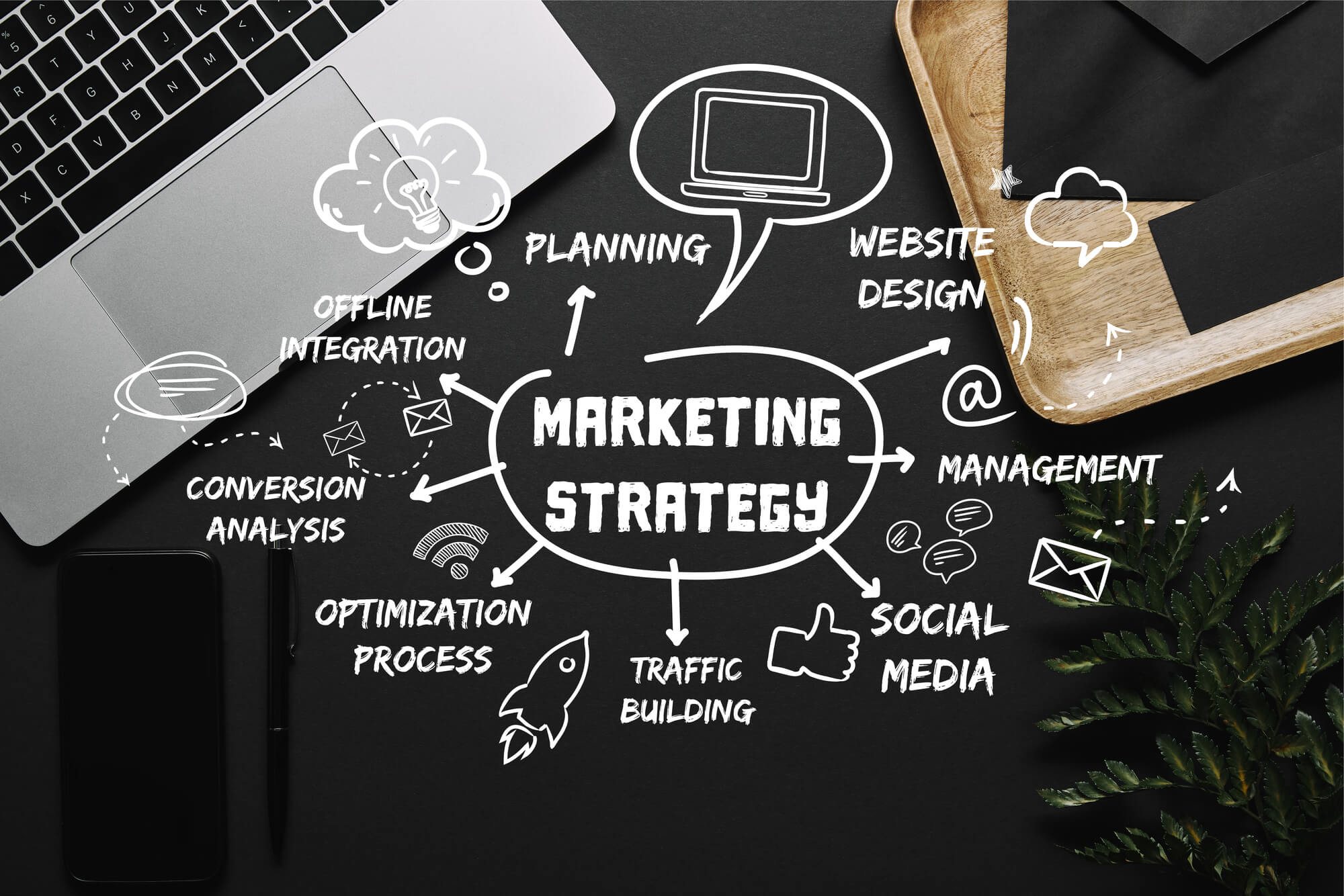A multi-channel marketing strategy is all about reaching your audience wherever they are, whether it’s through social media, email, or your website. By connecting with customers across different platforms, you can build stronger relationships and increase your chances of making a sale. This approach ensures that more people see your message and stay consistent across all channels.
In today’s fast-paced digital world, using multiple channels is a way to stay ahead of the competition. If you want to expand your reach and grow your business, Texas Web Design can help.
Contact us today to learn how a multi-channel marketing strategy can boost your success.
Understanding Multi-Channel Marketing
Multi-channel marketing involves engaging with customers across various platforms. This strategy combines both online and offline channels.

Strategy Differences
Multi-channel marketing stands apart from single-channel and omni-channel strategies. Single-channel focuses on one method of communication. Omni-channel provides a unified experience across all platforms.
The fundamental difference lies in integration and consistency. Multi-channel targets multiple platforms with no need for them to be interconnected. Omni-channel requires all channels to work together seamlessly.
Importance
Integrating online and offline channels is crucial. It creates a seamless customer experience. This strategy acknowledges that customers interact with brands in various ways.
A well-executed multi-channel approach can increase brand visibility and customer engagement. It recognizes the diverse preferences of today’s consumers.
Key Characteristics of Effective Strategies
-
Customer Focus
Understanding and prioritizing customer preferences and behaviors is important. Businesses must dive deep into customer data to tailor their strategies effectively. This involves analyzing how customers interact across different channels and what drives their decisions.
By doing so, companies can create a customer-centric marketing approach. This ensures that messages resonate more deeply with the audience, leading to higher engagement rates.
-
Consistency Across Channels
Maintaining consistency across all channels strengthens brand recognition and trust. It means ensuring that the message, tone, and visual elements are uniform, whether it’s on social media, email, or print ads.
This unified approach helps in creating a seamless customer experience. Customers feel more connected to the brand, fostering loyalty.
-
Marketing Automation
The use of marketing automation tools is key to streamlining efforts, personalizing interactions, and ensuring consistent messaging. These tools help in managing campaigns across multiple channels efficiently.
They also allow for the personalization of content, making each interaction unique to the customer. This leads to better engagement and conversion rates.
Steps to Building a High-Performing Strategy
-
Clear Objectives
Setting clear, measurable objectives is crucial. These goals should align with your business’s overall aims. They guide your multi-channel marketing efforts, ensuring every action contributes to the bigger picture.
Businesses must define what success looks like for each channel. It could be increasing website traffic, boosting sales, or enhancing customer engagement. By establishing these targets early, you can measure performance accurately and make necessary adjustments.
-
Channel Selection
Identifying and selecting the right channels is about understanding your audience. You need to know where they spend their time and how they prefer to receive information.
Research shows that different demographics favor different platforms. Younger audiences may gravitate towards social media, while professionals might be more active on LinkedIn. Selecting channels that align with your target audience’s preferences maximizes your strategy’s effectiveness.
-
Tailored Content
Developing tailored content for each channel is essential. However, maintaining brand consistency across all platforms is equally important.
Each piece of content should address the interests and needs of your audience on that channel. Yet, it should also fit within your brand’s overall voice and message. This approach ensures that regardless of where a customer encounters your brand, they receive a cohesive experience.
Benefits of Multi-Channel Marketing
-
Revenue Growth
Businesses have seen annual revenue increase by an average of 9.5% through multi-channel marketing. This strategy taps into different customer bases across various platforms. It turns casual browsers into loyal customers.
The approach leverages the strengths of each channel to maximize outreach and sales. This results in a significant boost in overall business performance.
-
Customer Engagement
Enhancing customer experience is significant in today’s market. Multi-channel marketing allows brands to interact with customers on their preferred platforms. This flexibility leads to higher engagement rates.
Customers feel valued when brands reach out on familiar grounds. This personal touch can drive conversions and foster loyalty.
-
Audience Reach
A multi-channel approach helps brands reach a wider audience. It diversifies marketing efforts, ensuring no potential customer is overlooked. By maintaining a consistent brand identity across platforms, businesses strengthen their market presence.
This strategy not only captures more attention but also builds a unified brand image. It’s an effective way to stand out in a crowded marketplace.
Closing Thoughts
Embracing a multi-channel marketing strategy isn’t just about spreading your message across various platforms; it’s about maximizing your reach and resonance with diverse audiences where they spend their time.
Your journey through understanding the essence, crafting effective strategies, and recognizing the benefits underscores its undeniable power in today’s fragmented media landscape. Remember, the key is not just to be everywhere, but to be everywhere that matters to your audience.
Now, armed with knowledge and strategies, it’s your turn to take action. Start by evaluating your current marketing efforts, identifying new channels that align with your audience’s preferences, and integrating them into a cohesive strategy.
The digital world waits for no one, and the sooner you harness the power of multi-channel marketing, the quicker you’ll see your efforts translate into tangible results. Dive in, experiment, and watch as your brand reaches new heights.
For expert guidance and support, contact Texas Web Design today, and let us help you make the most of your multi-channel marketing strategy.
Frequently Asked Questions
-
What is multi-channel marketing?
Multi-channel marketing involves using multiple platforms to reach and engage your audience, ensuring a cohesive message across all channels.
-
Why is a multi-channel marketing strategy important?
It allows businesses to meet their audience where they are, increasing the chances of engagement and conversion.
-
How do you build an effective multi-channel marketing strategy?
Start by understanding your audience, then select the right mix of channels, and finally, create consistent messaging that aligns with your brand values.
-
What are the major benefits of implementing a multi-channel marketing approach?
Increased reach, improved customer engagement, higher conversion rates, and enhanced customer loyalty are some of the major benefits.
-
Can multi-channel marketing work for small businesses?
Yes, it creates fairness by allowing small businesses to effectively reach their intended audience, just like larger companies.
-
How does multi-channel marketing impact customer experience?
It provides a seamless and integrated customer experience across various platforms, leading to higher satisfaction and loyalty.
-
What are the first steps in developing a high-performing multi-channel strategy?
Identify your target audience, choose the right channels based on where your audience spends their time, and create interesting content tailored to each channel.


 Businesses have seen annual revenue increase by an average of 9.5% through multi-channel marketing. This strategy taps into different customer bases across various platforms. It turns casual browsers into loyal customers.
Businesses have seen annual revenue increase by an average of 9.5% through multi-channel marketing. This strategy taps into different customer bases across various platforms. It turns casual browsers into loyal customers.